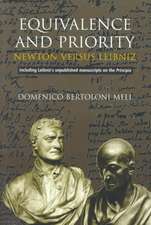The Dynamics of Transculturality: Concepts and Institutions in Motion: Transcultural Research – Heidelberg Studies on Asia and Europe in a Global Context
Editat de Antje Flüchter, Jivanta Schöttlien Limba Engleză Paperback – 18 noi 2014
Din seria Transcultural Research – Heidelberg Studies on Asia and Europe in a Global Context
- 18%
 Preț: 948.92 lei
Preț: 948.92 lei - 18%
 Preț: 1216.48 lei
Preț: 1216.48 lei - 15%
 Preț: 637.59 lei
Preț: 637.59 lei - 15%
 Preț: 636.80 lei
Preț: 636.80 lei - 18%
 Preț: 939.46 lei
Preț: 939.46 lei - 15%
 Preț: 648.24 lei
Preț: 648.24 lei - 15%
 Preț: 639.25 lei
Preț: 639.25 lei - 15%
 Preț: 643.34 lei
Preț: 643.34 lei - 15%
 Preț: 640.55 lei
Preț: 640.55 lei - 18%
 Preț: 889.75 lei
Preț: 889.75 lei - 15%
 Preț: 649.54 lei
Preț: 649.54 lei -
 Preț: 419.06 lei
Preț: 419.06 lei - 15%
 Preț: 632.52 lei
Preț: 632.52 lei -
 Preț: 386.99 lei
Preț: 386.99 lei - 15%
 Preț: 636.30 lei
Preț: 636.30 lei -
 Preț: 363.52 lei
Preț: 363.52 lei - 18%
 Preț: 784.61 lei
Preț: 784.61 lei - 15%
 Preț: 644.18 lei
Preț: 644.18 lei - 18%
 Preț: 897.14 lei
Preț: 897.14 lei - 18%
 Preț: 779.57 lei
Preț: 779.57 lei - 15%
 Preț: 584.10 lei
Preț: 584.10 lei - 15%
 Preț: 588.37 lei
Preț: 588.37 lei
Preț: 387.75 lei
Nou
Puncte Express: 582
Preț estimativ în valută:
74.21€ • 77.19$ • 61.26£
74.21€ • 77.19$ • 61.26£
Carte tipărită la comandă
Livrare economică 15-29 aprilie
Preluare comenzi: 021 569.72.76
Specificații
ISBN-13: 9783319097398
ISBN-10: 3319097393
Pagini: 300
Ilustrații: IX, 277 p. 26 illus., 5 illus. in color.
Dimensiuni: 155 x 235 x 17 mm
Greutate: 0.41 kg
Ediția:2015
Editura: Springer International Publishing
Colecția Springer
Seria Transcultural Research – Heidelberg Studies on Asia and Europe in a Global Context
Locul publicării:Cham, Switzerland
ISBN-10: 3319097393
Pagini: 300
Ilustrații: IX, 277 p. 26 illus., 5 illus. in color.
Dimensiuni: 155 x 235 x 17 mm
Greutate: 0.41 kg
Ediția:2015
Editura: Springer International Publishing
Colecția Springer
Seria Transcultural Research – Heidelberg Studies on Asia and Europe in a Global Context
Locul publicării:Cham, Switzerland
Public țintă
ResearchCuprins
Introduction.- Part I. Conceptual considerations.- Marxism, Modernity, and Revolution: The Asian Experience.- From Religious Contact to Scientific Comparison and back. Some Methodological Considerations on Comparative Perspectives in the Science of Religion.- Part II. Politics and flow.- Hippodamos and Phoenicia: On city Planning and Social Order in a Transcultural Context.- A Forgotten Landscape of the Form of Government.- Military Intelligence and Early Modern Warfare. The Dutch East India Company and China 1622–1624.- ‘Cultural Citizenship’ and Media Representation in India: Towards a Trans-Policy Approach.- The Era of Crowds: Gustave Le Bon, Crowd Psychology, and Conceptualising of Mass-Elite Relations in China.- Part III. Religion and flow.- The Goddess’s New Clothes. Conceptualising an ‘Eastern’ Goddess for a ‘Western’ Audience.- Across Central Asia: Cultural Crossroads, Religious Interactions? The Monastery, H.2153 fol. 131v, Topkapı Sarayı Müzesi, Istanbul.- Importing and Exporting Gods? On the Flow of Deities between Egypt and its Neighboring Countries.
Textul de pe ultima copertă
The purpose of this volume is to identify and analyze the mechanisms and processes through which concepts and institutions of transcultural phenomena gain and are given momentum. Applied to a range of cases, including examples drawn from ancient Greece and modern India, the early modern Portuguese presence in China and politics of elite-mass dynamics in the People’s Republic of China, the book provides a template for the study of transcultural dynamics over time. Besides the epochal range, the papers in this volume illustrate the thematic diversity assembled under the umbrella of the Heidelberg Cluster of Excellence “Asia and Europe in a Global Context.” Drawing from both the humanities and social sciences, stretching across several world areas and centuries, the book is an interdisciplinary work, aptly reflected in the collaboration of its editors: a historian and political scientist.
Caracteristici
This is an interdisciplinary effort to deconstruct transculturality as a methodological lens Examples are provided to illustrate and discuss the transcultural dynamics of concepts and institutions in motion Transcultural dynamics occur across time and space - each chapter illustrates this by way of a case study Includes supplementary material: sn.pub/extras















